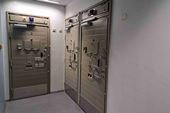The analysts found that key factors fuelling the growth of this market include rising incidence of security breaches, growing use of drones to counter terrorism and prevent illicit activities, and increased adoption of counter drones for remote sensing.
Homeland security biggest growth vertical
Homeland security comprises local police bodies using anti-drone systems to protect government offices, prisons, airports, railway stations, and courts. According to the research, there are no defined laws for private property invasion by drones, which has made it unclear about flying a drone over private property. These undefined laws give space for complaints such as drones causing nuisance and being flown recklessly. Lawmakers, advocates, and citizens grapple with the issue of privacy and safety while balancing the potential benefits of UAVs’ commercial or private uses. A few basic drone detection products can help to resolve such concerns, thereby providing the scope for anti-drone systems for private use. Electronic systems such as radars, RF detectors, EO/IR cameras, RF jammers, and GNSS jammers are expected to drive the anti-drone market for homeland security.
Laser systems are proving most popular
Laser weapons are increasingly being used to destroy or burn UAVs. The effectiveness of the laser system depends on the target construction, material, and range. According to military experts, lasers need massive power, and the laser beam is deteriorated by dust, water vapour, etc. Companies are trying to develop technologically advanced laser-based anti-drones to increase the targeting capability of anti-drone systems. Lockheed Martin Corporation (US), Rheinmetall AG (Germany), and Raytheon Technologies Corporation (US) have been developing laser-based anti-drone systems. Laser systems mostly find applications in the military & defence vertical owing to their high speed, flexibility, precision, and low cost per shot features.
Americas hold largest market share
The Americas is the largest shareholder in terms of the number of anti-drone systems deployed in the military & defence, commercial infrastructure, and homeland security verticals. In the Americas, military & defence is the major vertical in which anti-drone systems are used, which drives the growth of the anti-drone market in the region. The growing use of drones in this region also contributes to the growth of the anti-drone market. A few well-established players in this region are leading to extensive R&D related to anti-drone systems. Moreover, favourable economic conditions and a rise in safety concerns are encouraging the commercial and industrial sectors to deploy anti-drone systems in the region.
Key players
The main players mentioned in the research include, SRC, Inc., Raytheon Technologies Corporation, Lockheed Martin Corporation, Thales, Blighter Surveillance Systems Ltd., Israel Aerospace Industries Ltd., Leonardo S.p.A, Rafael Advanced Defense Systems Ltd., Droneshield Ltd., Liteye Systems Inc, Dedrone, Northrop Grumman, Detect, Inc, MBDA, Battelle Memorial Institute, Saab, CACI International, Boeing, and Dronedefence. These players are increasingly undertaking strategies such as product launches and development, expansions, partnerships, contracts, and acquisitions to increase their market share.














